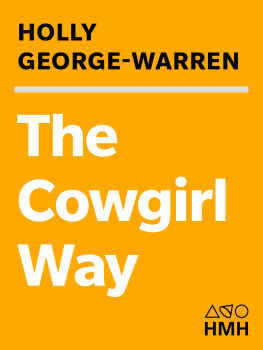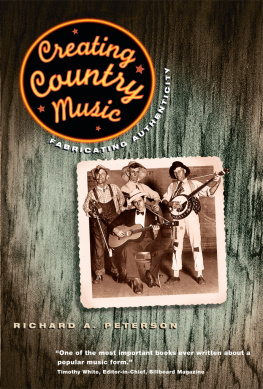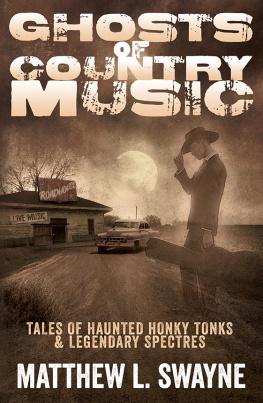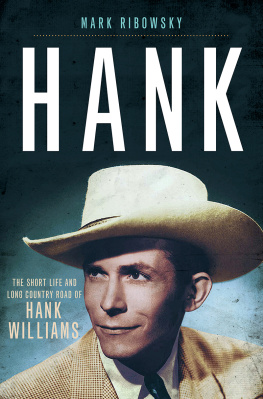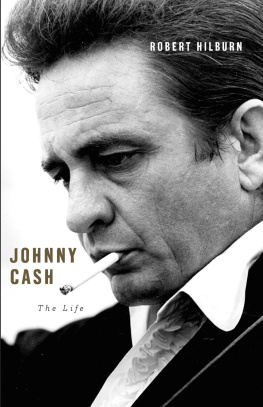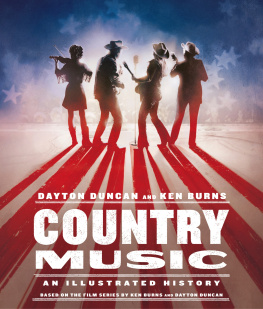
HONKY-TONK HEROES
&
HILLBILLY ANGELS
The Pioneers of Country & Western Music
WORDS BY HOLLY GEORGE-WARREN
PICTURES BY LAURA LEVINE
HOUGHTON M IFFLIN C OMPANY B OSTON 2006
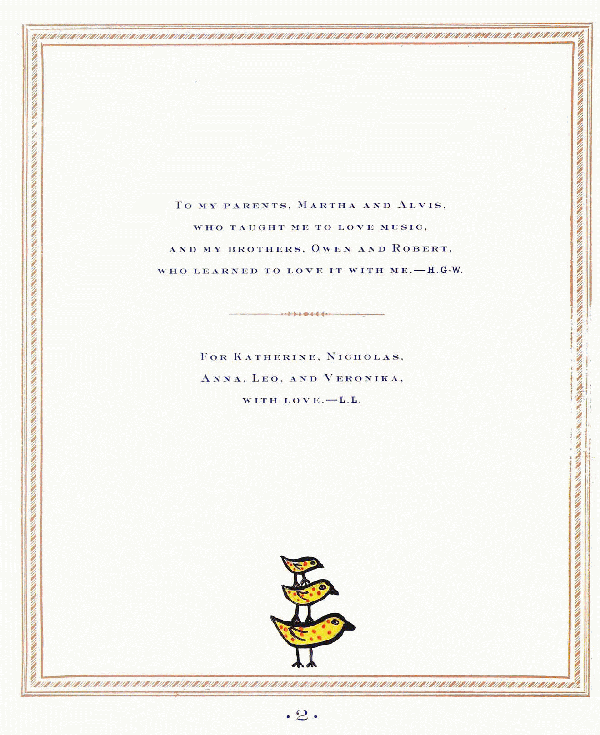
T O MY PARENTS , M ARTHA AND A LVIS ,
WHO TAUGHT ME TO LOVE MUSIC ,
AND MY BROTHERS , O WEN AND R OBERT ,
WHO LEARNED TO LOVE IT WITH ME.H. G-W.
F OR K ATHERINE , N ICHOLAS ,
A NNA , L EO, AND V ERONIKA ,
WITH LOVE.L. L.

INTRODUCTION
Before the invention of records, radio, movies, and television, people entertained themselves by playing instruments and singing. In the 1800s, emigrants to America brought with them old folk songs. Many of these settlers homesteaded in the hills of the Carolinas, Georgia, Virginia, Kentucky, and Tennessee. There, the mountaineers played fiddles, banjos, and guitars. Singers crooned ballads about such calamities as murders and train wrecks. The best musicians competed at local fiddling contests, and young and old kicked up their heels at Saturday night hoedowns called barn dances.
In the 1920s, northern talent scouts ventured into the backwoods to record the music they named "hillbilly." They released it on records, and soon radio helped to spread the music too. In 1924, a Chicago station first broadcast a professional barn dance program featuring comedians, musicians, and entertainers yodeling cowboy songs. Those tunes became very popular, and some artists began dressing up as cowboys and cowgirlseven if they didn't know one end of a horse from the other. The next year, a Nashville radio station started its own Saturday night barn dance program. Making fun of hoity-toity audiences who listened to grand opera, the show's MC, George D. Hay, called his program the Grand Ole Opry. Because of the music's rural and cowboy style, people began to call it "country & western," or "C&W"
Out west, in the 1940s, C&W got louder in roadhouses and saloons called honky-tonks. Because people danced and acted rowdy in these places, the musicians plugged their guitars into amplifiers and added drums to be heard over the din. Vocalists sang about whiskey, broken marriages, and other tragedies of modern life. Large honky-tonk bands included horn sections and called their style "Western swing." In the 1950s, some musicians mixed country & western with the blues, giving birth to rock & roll. C&W grew more polished and gradually lost its rural flavor and twanginess, and the music's name got shortened to "country." Today's country stars would not exist without the pioneers who created a truly American sound: country & western music.
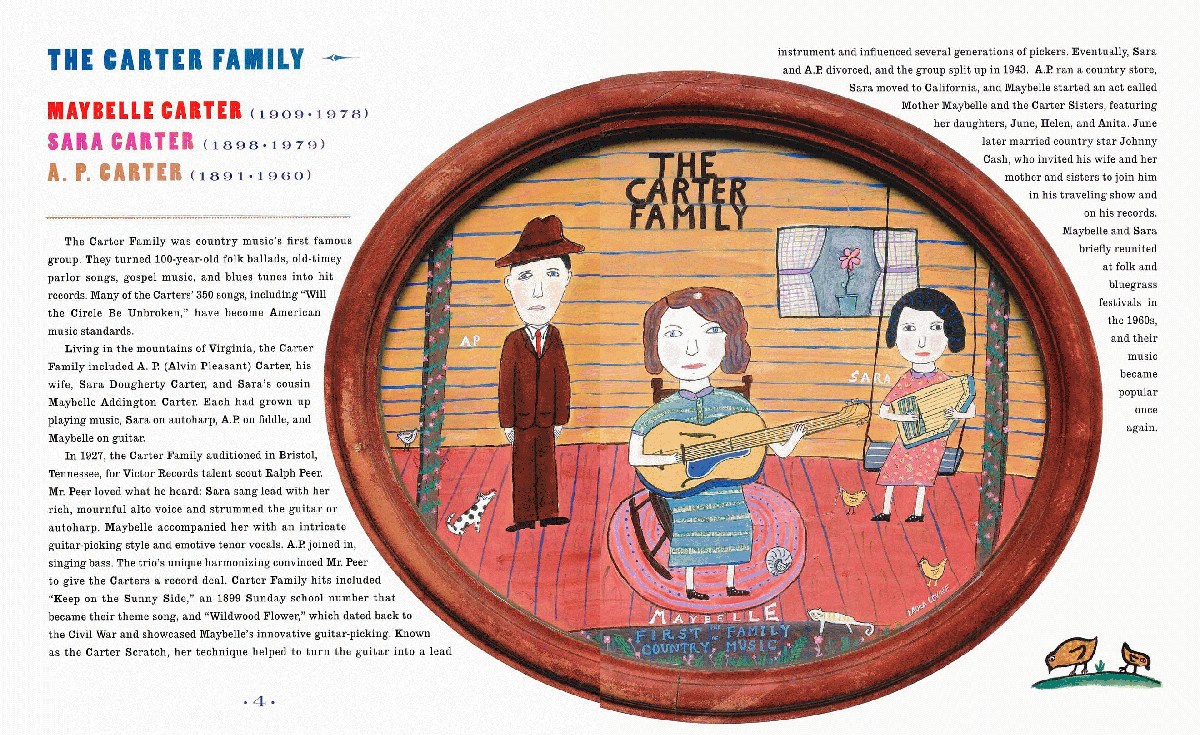
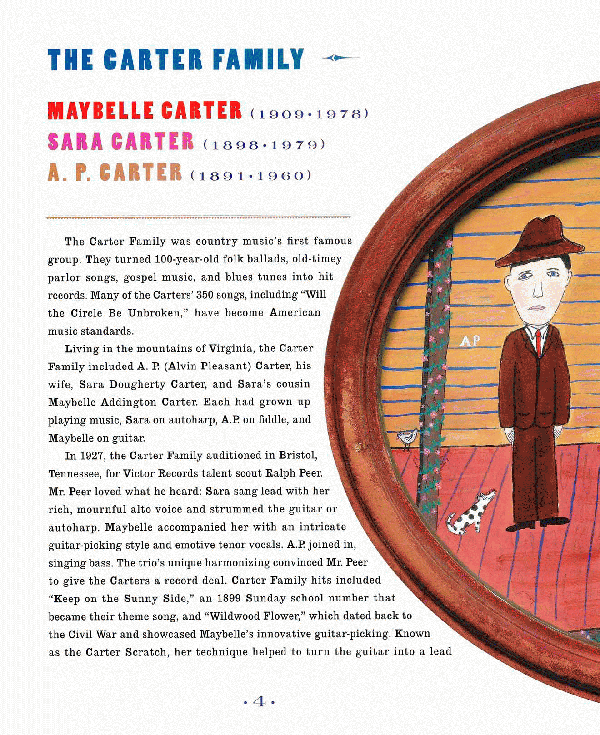

THE CARTER FAMILY
MAYBELLE CARTER (19091978)
SARA CARTER (18981979)
A. P. CARTER (18911960)
The Carter Family was country music's first famous group. They turned. 100-year-old folk ballads, old-timey parlor songs, gospel music, and blues tunes into hit records. Many of the Carters' 350 songs, including "Will the Circle Be Unbroken," have become American music standards.
Living in the mountains of Virginia, the Carter Family included A. P (Alvin Pleasant) Carter, his wife, Sara Dougherty Carter, and Sara's cousin Maybelle Addington Carter, Each had grown up playing music, Sara on autoharp, A.P on fiddle, and Maybelle on guitar.
In 1927, the Carter Family auditioned in Bristol, Tennessee, for Victor Records taient scout Ralph Peer. Mr. Peer loved what he heard: Sara sang lead with her rich, mournful alto voice and strummed the guitar or autoharp. Maybelle accompanied her with an intricate guitar-picking style and emotive tenor vocals, A.P. joined in, singing bass. The trio's unique harmonizing convinced Mr. Peer to give the Carters a record deal. Carter Family hits included "Keep on the Sunny Side," an 1899 Sunday school number that became their theme song, and "Wildwood Flower," which dated back to the Civil War and showcased Maybelle's innovative guitar-picking. Known as the Carter Scratch, her technique helped to turn the guitar into a lead instrument and influenced several generations of pickers. Eventually, Sara and A.E divorced, and the group split up in 1943. A.E ran a country store, Sara moved to California, and Maybelle started an act called Mother Maybelle and the Carter Sisters, featuring her daughters, June, Helen, and Anita. June later married country star Johnny Cash, who invited his wife and her mother and sisters to join him in his traveling show and on his records. Maybelle and Sara briefly reunited at folk and bluegrass festivals in the 1960s, and their music became popular once again.
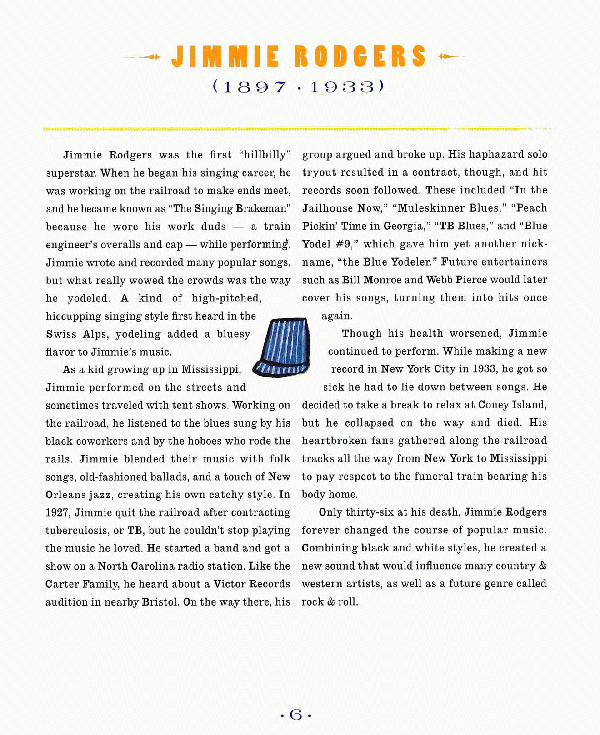
JIMMIE RODGERS
(1897 1933)
Jimmie Rodgers was the first "hillbilly" superstar. When he began his singing career, he was working on the railroad to make ends meet, and he became known as "The Singing Brakeman" because he wore his work dudsa train engineer's overalls and capwhile performing. Jimmie wrote and recorded many popular songs, but what really wowed the crowds was the way he yodeled. A kind of high-pitched, hiccupping singing style first heard in the Swiss Alps, yodeling added a bluesy flavor to Jimmie's music.
As a kid growing up in Mississippi, Jimmie performed on the streets and sometimes traveled with tent shows. Working on the railroad, he listened to the blues sung by his black coworkers and by the hoboes who rode the rails, Jimmie blended their music with folk songs, old-fashioned ballads, and a touch of New Orleans jazz, creating his own catchy style. In 1927, Jimmie quit the railroad after contracting tuberculosis, or TB, but he couldn't stop playing the music he loved. He started a band and got a show on a North Carolina radio station. Like the Carter Family, he heard about a Victor Records audition in nearby Bristol. On the way there, his group argued and broke up. His haphazard solo tryout resulted in a contract, though, and hit records soon followed. These included "In the Jailhouse Now," "Muleskinner Blues," "Peach Pickin' Time in Georgia," "TB Blues," and "Blue Yodel #9," which gave him yet another nickname, "the Blue Yodeler." Future entertainers such as Bill Monroe and Webb Pierce would later cover his songs, turning them into hits once again.
Though his health worsened, Jimmie continued to perform. While making a new record in New York City in 1933, he got so sick he had to lie down between songs. He decided to take a break to relax at Coney Island, but he collapsed on the way and died. His heartbroken fans gathered along the railroad tracks all the way from New York to Mississippi to pay respect to the funeral train bearing his body home.
Next page

